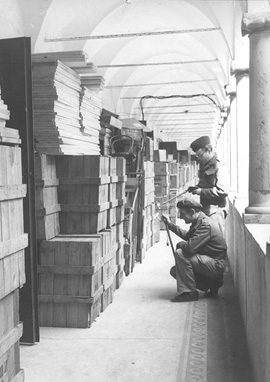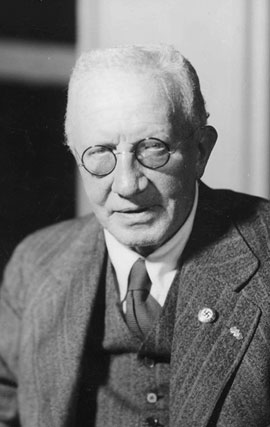
Kloster Tanzenberg
Since 1944 the collection of books belonging to the “Central Library of the Hohe Schule,” a National Socialist elite university planned by Alfred Rosenberg, were stored in the Carinthian monastery at Tanzenberg since 1944. British troops discovered the book storage facility in May 1945. The majority of the 500,000 to 700,000 volumes stored there originated from Jewish property that had been confiscated.
See:

Otto Kümmel (1874-1952)
In 1940, Otto Kümmel, general director of the Staatliche Museen zu Berlin (Berlin State Museums), was commissioned by Goebbels, Minister for Propaganda, to compile a list of artworks that had left Germany since the 16th century, particularly during the Napoleonic Wars and after the Treaty of Versailles. They were to be "returned" to the German Reich.
See:





